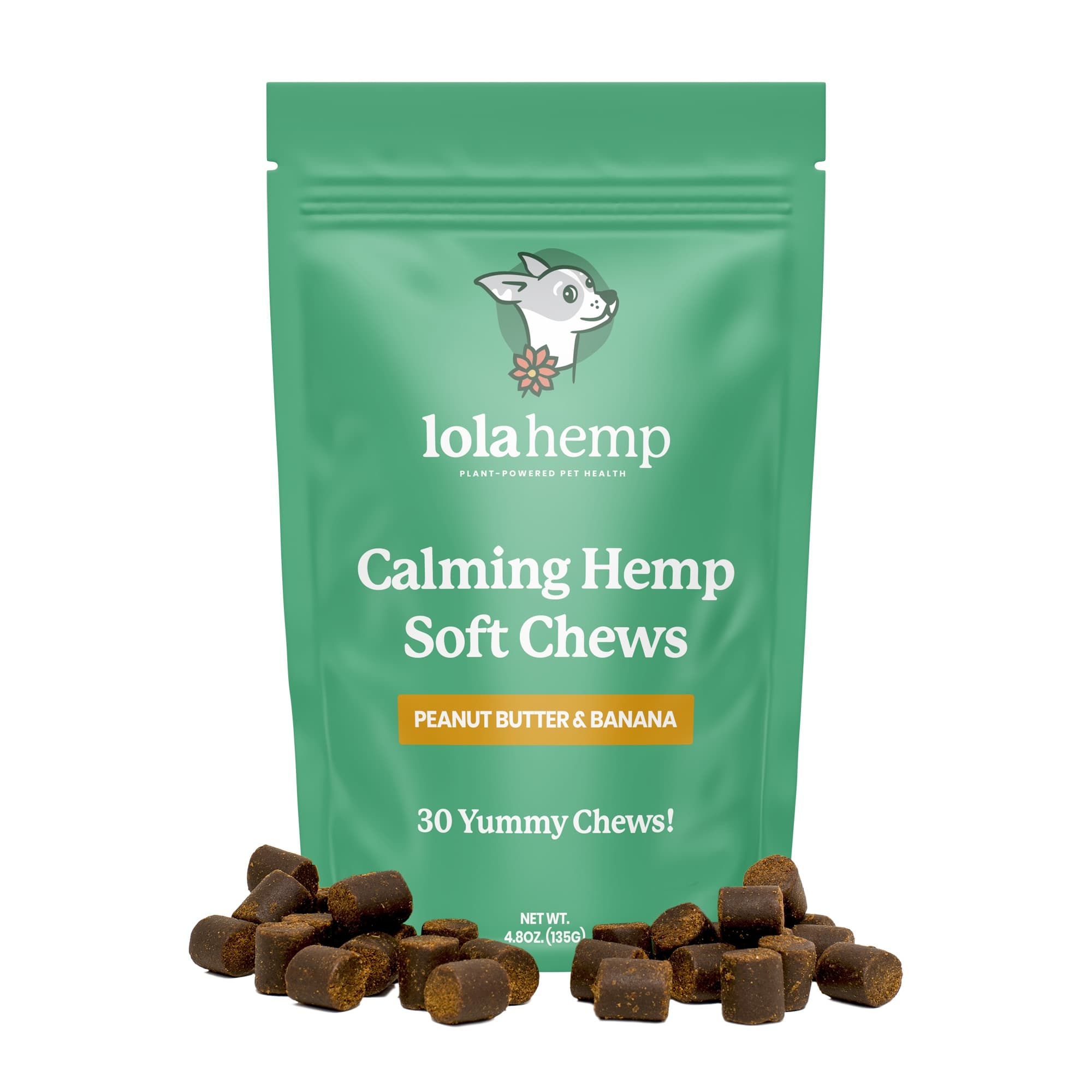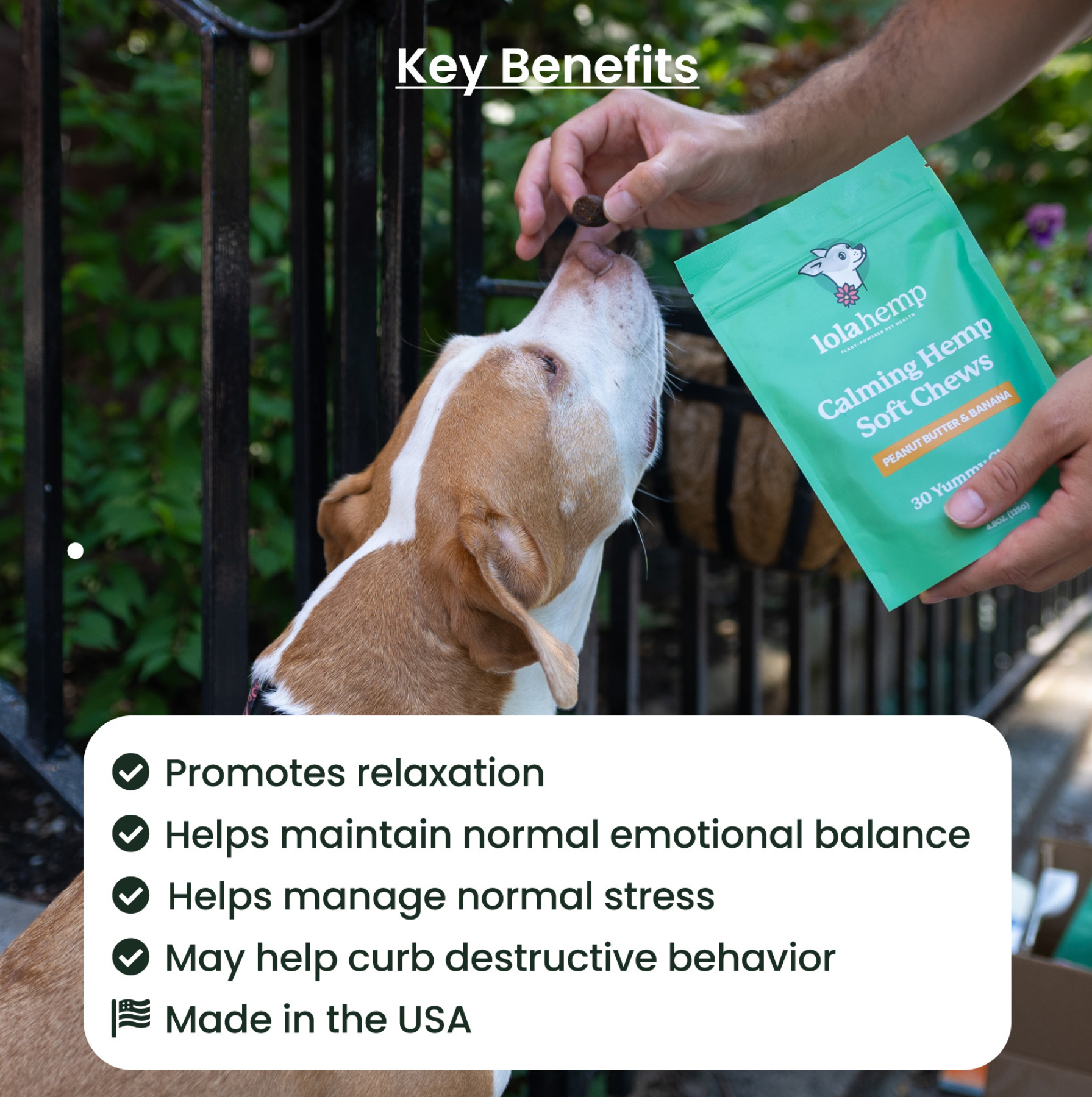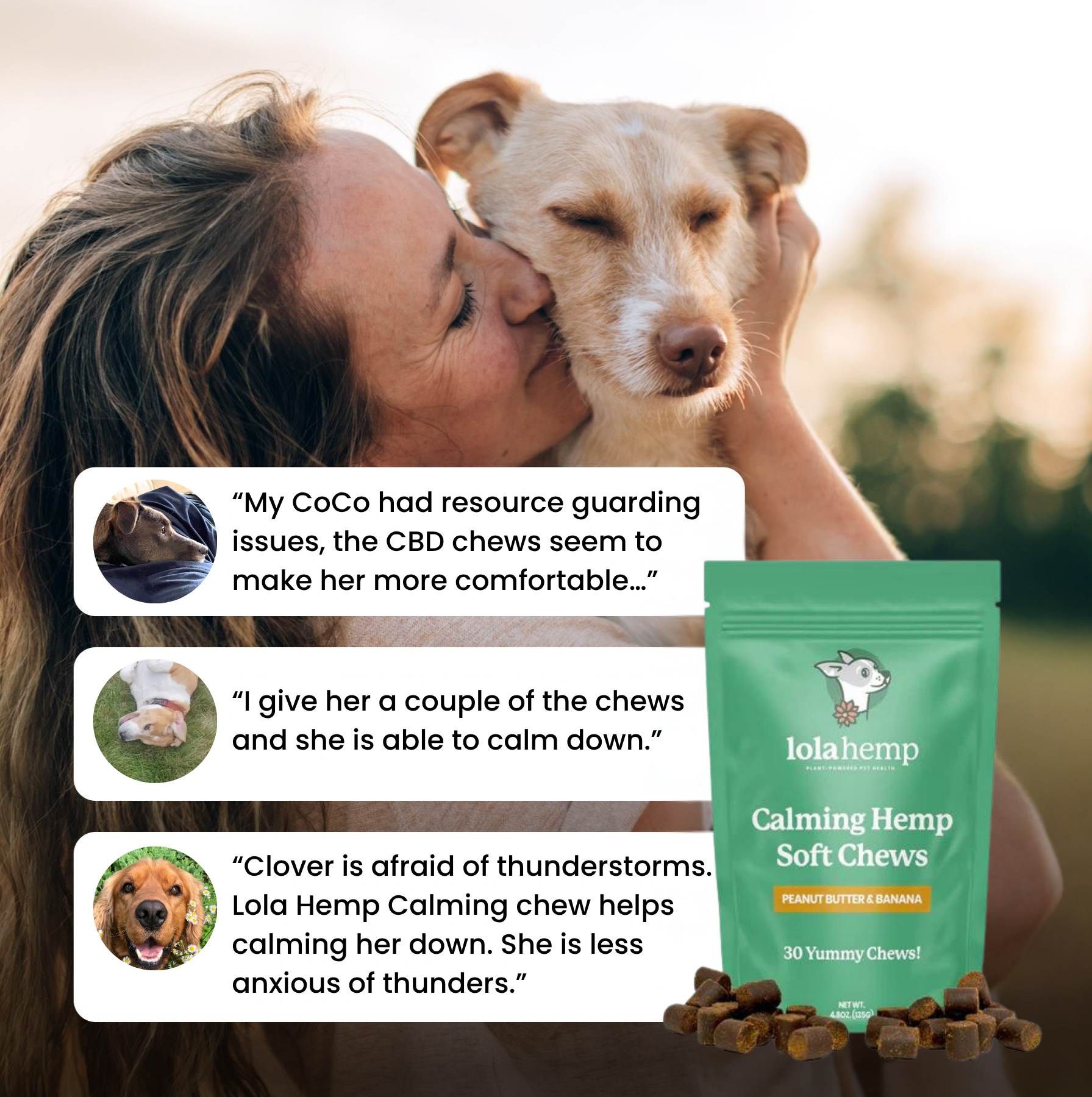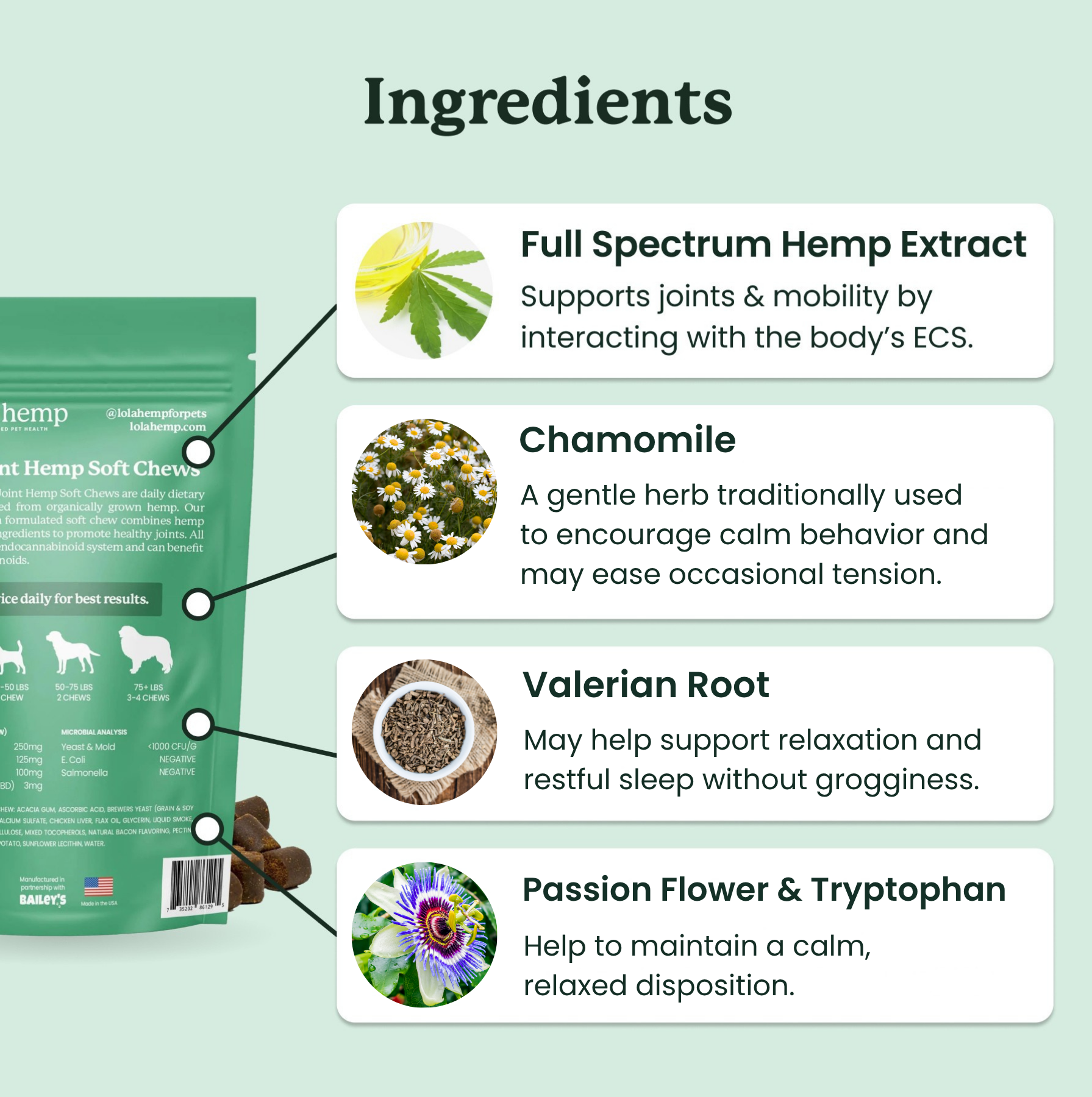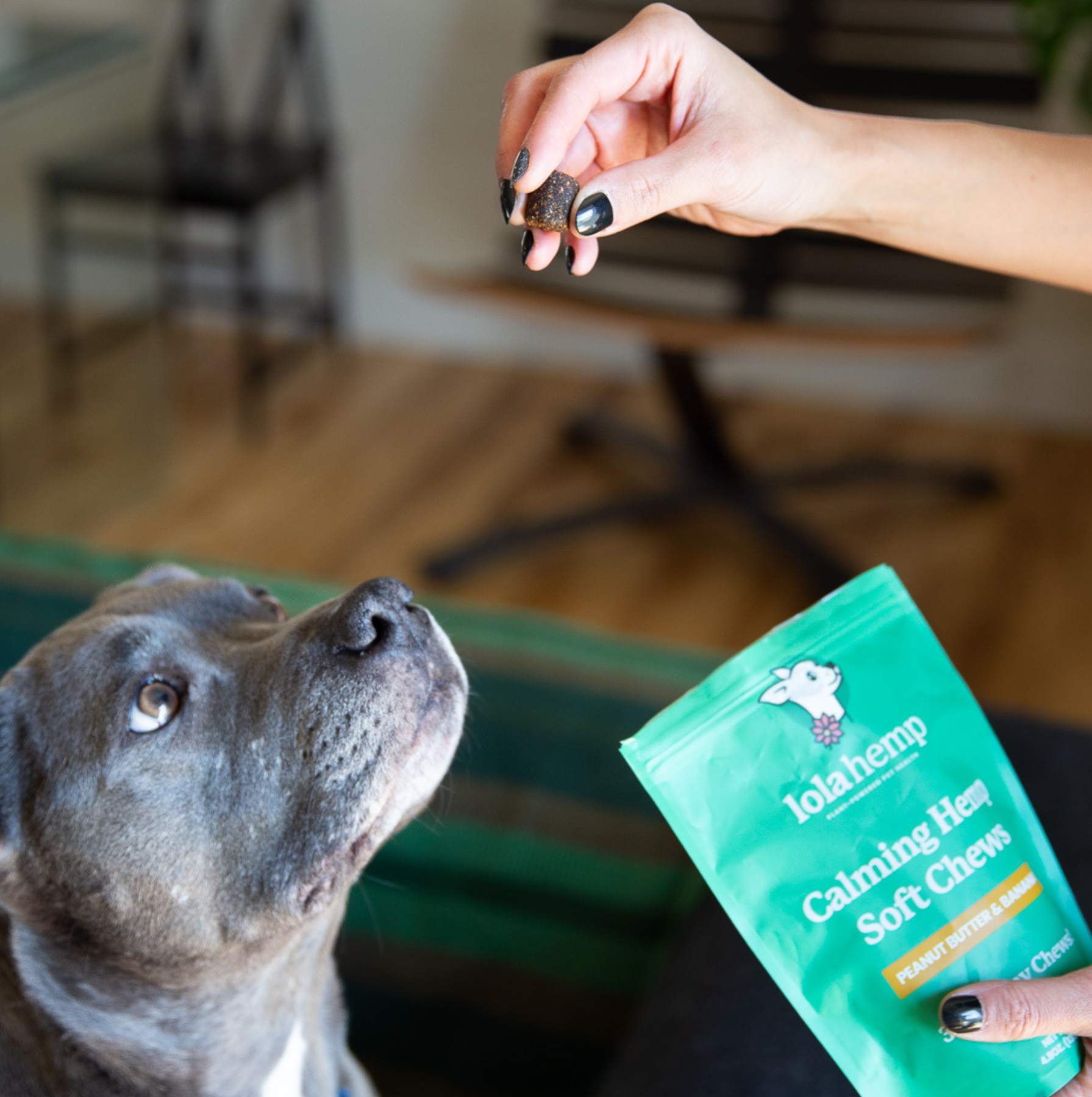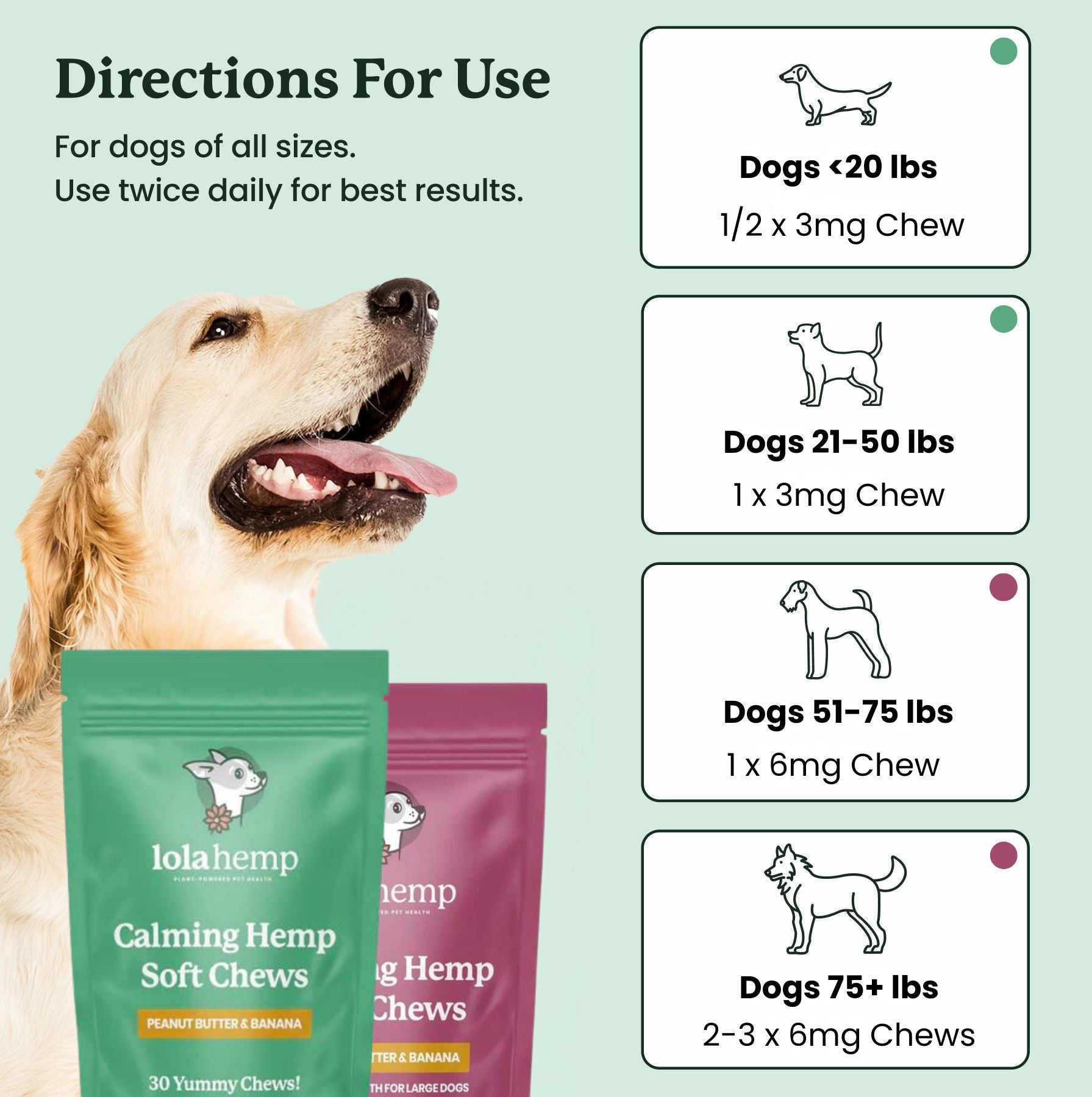Crate training is one of the most effective ways to help your young dog or new puppy feel safe and secure while also teaching them important habits.
While the idea of confining your furry friend may seem daunting at first, a crate can actually become a cozy haven where your puppy can relax, sleep, and feel protected. In this guide, we'll walk you through the benefits of crate training, essential tips to get started, and helpful techniques to ensure your pup learns to love their crate.
If you're interested in crate training an older dog, you can also learn how in a few easy steps.
Can CBD Help a Puppy with Crate Training?
CBD may help some puppies with anxiety-related behaviors during crate training by promoting calmness and relaxation. However, it’s important to note that every puppy responds differently, and CBD should be considered as part of a broader strategy that includes positive reinforcement, consistency, and patience. Always consult with a veterinarian before introducing CBD or any supplement to ensure safety, especially for young puppies.
If you're considering using CBD for your puppy, it may offer support for their overall well-being, contributing to a more balanced state of mind. By interacting with the endocannabinoid system, CBD might promote a sense of calm, which could help them adapt to new situations like crate training. Additionally, it could encourage better rest and relaxation. Always consult your veterinarian before introducing CBD to ensure it's the right choice for your puppy's individual needs and development.

How to Crate Train Your Puppy Effectively
Crate training is an essential skill for your puppy's comfort and safety. Here are 10 proven steps to make the process smoother:
- Choose the Right Crate: Select a crate that’s large enough for your puppy to stand, turn, and lie down comfortably.
- Introduce the Crate: Place the crate in a quiet area, leave the door open, and encourage exploration with treats and toys.
- Make It Cozy: Add soft bedding and some favorite toys to make the crate feel like a safe, inviting space.
- Start with Short Sessions: Begin with short periods inside the crate, gradually increasing the time.
- Create a Routine: Use consistent cues like “crate” and take your puppy to the crate after meals or playtime.
- Reward Positive Behavior: Praise your puppy when they willingly enter the crate, reinforcing positive associations.
- Practice Short Absences: Step out of sight briefly to help your puppy adjust to being alone.
- Stay Patient and Consistent: Consistency is key—stick to the routine, but give your puppy time to adjust.
- Watch for Signs of Stress: Monitor your puppy for signs of anxiety and adjust the process if needed.
- Phase Out the Crate: Eventually, leave the crate door open during the day, allowing your puppy to use it as a personal sanctuary.
By sticking to these steps, your puppy will grow to see their crate as a safe, comfortable space rather than a place of confinement.

Common Issues When Crate Training Puppies
If everything was easy as following a few steps, there wouldn't be a need for resources like this one! Naturally, your little puppy is going to pose some challenges.
Let's address some of the most common issues. We're confident that at least one or more of the issues below has brought you to this article.
1. Your Puppy is Peeing in The Crate
Your puppy might pee in the crate due to anxiety or simply from having to go. Here are some general pointers if your puppy is peeing in their crate while you're training them:
- Stay Calm: Reacting with anger can create fear and anxiety around the crate. Remain calm and collected.
- Clean Thoroughly: Clean the area with an enzymatic cleaner to eliminate odors. This helps prevent your puppy from returning to the same spot.
- Assess Timing: Evaluate your puppy’s schedule. Puppies have small bladders and may need more frequent potty breaks, especially after eating, drinking, or playing.
- Adjust Crate Time: If your puppy is crating for too long, shorten the time. Gradually increase crate time as they gain bladder control.
- Reinforce Potty Training: Take your puppy outside immediately after letting them out of the crate. Praise and reward them for going outside.
- Limit Water Intake: Avoid giving water right before crating, especially at night.
- Be Patient: Accidents are a normal part of training. Be patient and consistent.
2. Your Puppy is Crying and Whining in The Crate
Puppies crying can get frustrating. Even though it's normal, consider these tips:
- Ensure Comfort: Use soft bedding and a favorite toy. Keep the crate in a quiet space.
- Check for Needs: Ensure they've eaten, pottied, and had exercise before crating.
- Gradual Acclimation: Start with short sessions and increase the time.
- Avoid Reinforcing Whining: Don’t open the crate while they're whining—wait for silence.
- Use a Crate Cover: A light cover may help create a den-like feel.
- Comfort with Sounds: White noise or a ticking clock may soothe them.
- Use a Cue: Give a consistent command associated with entering the crate.
- Practice Short Departures: Leave the room briefly to help them adjust.
3. How Long to Let The Puppy Cry in Its Crate
So long as your puppy is crying for attention and has their needs met, these guidelines may help:
Beginning Phase (Days 1-3)
- Crying Duration: 10–15 minutes.
- Response: Check if crying persists and they may need something.
Middle Phase (Days 4-10)
- Crying Duration: 20–30 minutes.
- Response: Check only if distressed.
End Phase (Days 11 and Beyond)
- Crying Duration: Up to 30–60 minutes.
- Response: Reinforce calm behavior.
Conclusion
In conclusion, CBD may offer supportive benefits for your puppy during crate training by promoting a sense of calm and relaxation. While it’s not a cure-all, it could be a useful tool as part of a broader training plan. Always consult your veterinarian before starting CBD. With patience, consistency, and the right approach, crate training can be a positive experience for both you and your pup.
Good luck crate training your puppy! We hope it's a rewarding experience for you and your canine companion.
Frequently Asked Questions About Crate Training Puppies
How long can a puppy stay in a crate?
Young puppies can typically stay in a crate for 1–3 hours depending on age, bladder control, and comfort level.
Should you crate train a puppy at night?
Yes. Crate training at night helps build routine and prevent accidents, but puppies may need nighttime potty breaks.
Where should you place a puppy’s crate?
Place the crate in a quiet area where the puppy can still feel close to the family, helping them feel secure.
Should you put food and water in the crate?
Food and water are not typically necessary inside the crate unless the puppy will be inside for an extended period.
Is it okay to use CBD to help with crate training?
CBD may help promote calmness in some puppies, but always consult your veterinarian before use.

